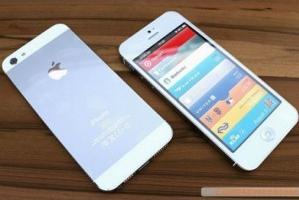
Apple today exhausted its supply of the iPhone 5 within an hour of opening its online store for pre-orders, and now is telling customers that their orders won’t ship for two weeks.
Apple ran through its iPhone 5 pre-order inventory in just an hour, and now shows a two-week shipping delay.
According to reports, Apple ran though its inventory by 1 a.m. PT, or an hour after its store opened to take pre-sale orders. Meanwhile, some carrier stores were difficult or impossible to reach as they were overwhelmed by customers.
As of 11 a.m. ET, Apple’s store noted “Available to ship: 2 weeks” for iPhone 5 orders.
Last year, Apple made it through much of Oct. 7, 2011 – the pre-sales launch for the iPhone 4S — before running out.
“I think it’s demand,” said Brian White of Topeka Capital Markets, of the quick sell-out. “Apple wouldn’t want to upset customers by running out in just an hour.”
There are supply constraints, said White, who noted that they’re inherent in any mobile product launch to one degree or another, calling them “part of the game.”
“Cook said [Wednesday] that this is the fastest launch in Apple’s history, with nine countries rather than seven [in the first wave],” said White. “He wouldn’t have planned such an aggressive launch if he thought that supply would be a material event.”
If Apple had been overly concerned about supply issues, argued White, it would have reduced the number of opening markets from nine to, say, five. It didn’t.
Before Apple’s Wednesday unveiling of the iPhone 5, White had forecast 5 million to 5.5 million units pre-sold worldwide over the first weekend, which included today, tomorrow and Sunday. White had pegged opening-day sales of 1.3 to 1.5 million.
His numbers were bullish: Estimates for the weekend by the most aggressive Wall Street analysts had topped out at 6 million, with many lower than that.
Last year, Apple said it sold 4 million iPhone 4S smartphones in the first three days.
While demand for the iPhone 5 may be higher than expected, there have been reports, as White acknowledged, of problems at Sharp, one of the three suppliers of the smartphone’s display module.
The iPhone 5 relies on not only a larger screen than its predecessors, but uses “in-cell” technology, which does away with a separate touch-sensitive layer under the glass and instead integrates sensors into the liquid-crystal display (LCD) itself.
“I’ve felt that, on the display, Apple should be pretty caught up sometime in early 2013,” said White when asked to predict when supply and demand would be in balance. “The display manufacturers should hit their yields in November or December.”
That may be little solace to those who wanted an iPhone 5 a week from today, but instead will have to wait.
White, however, wasn’t one of those. “I was up at 3 a.m. [ET], and I got mine,” he said.
Keith Shaw and Ken Mingis discuss the features of Apple’s iPhone 5 smartphone, and whether the larger screen, 4G LTE network and other features will excite the legions of Apple fans.





